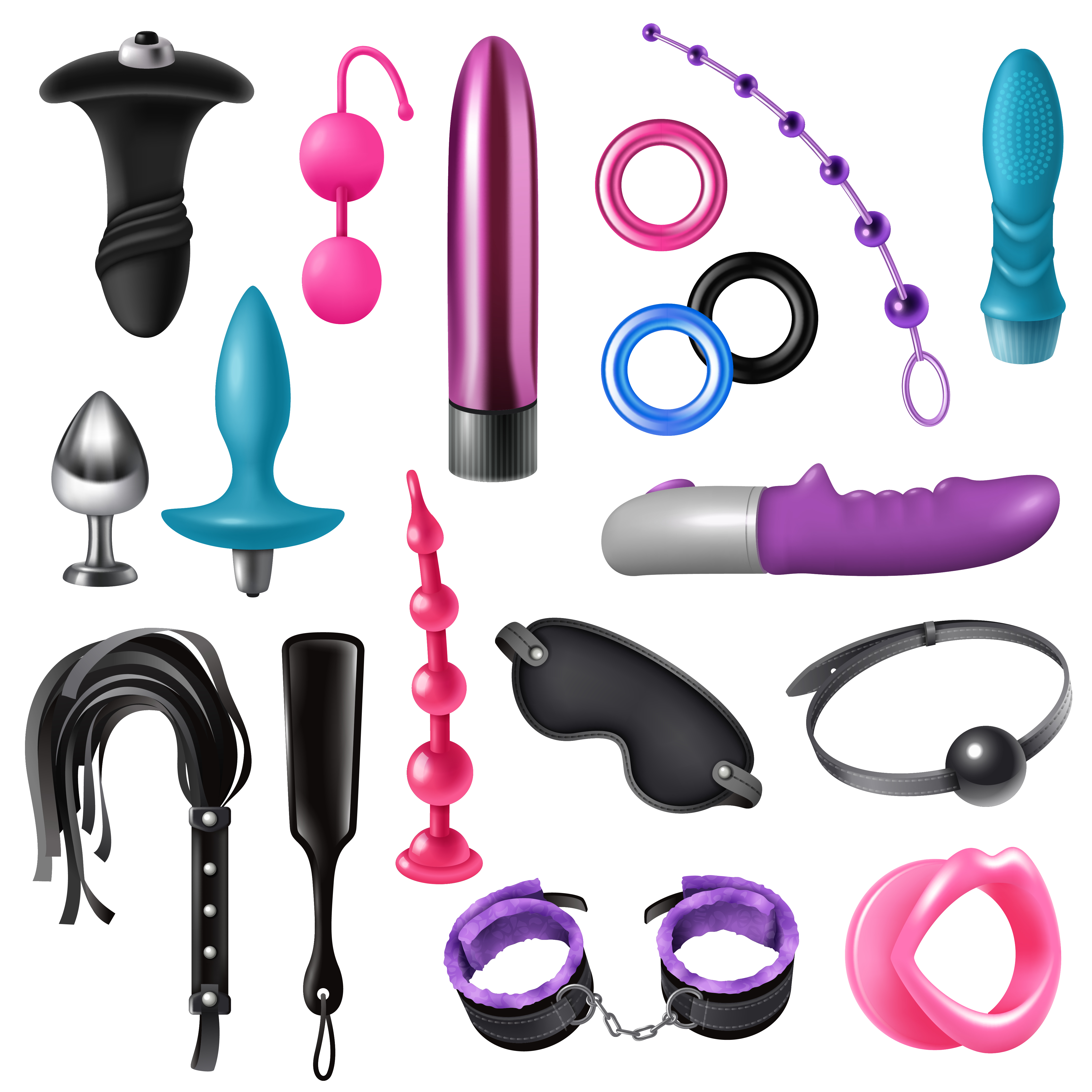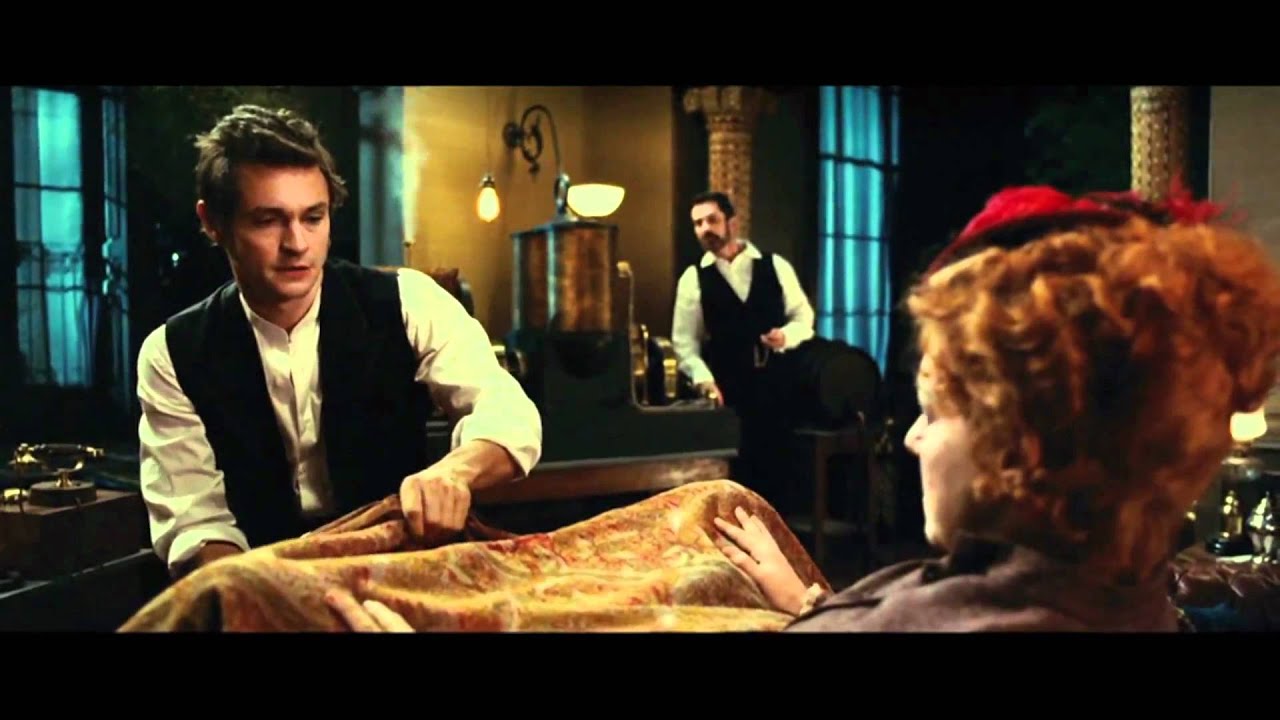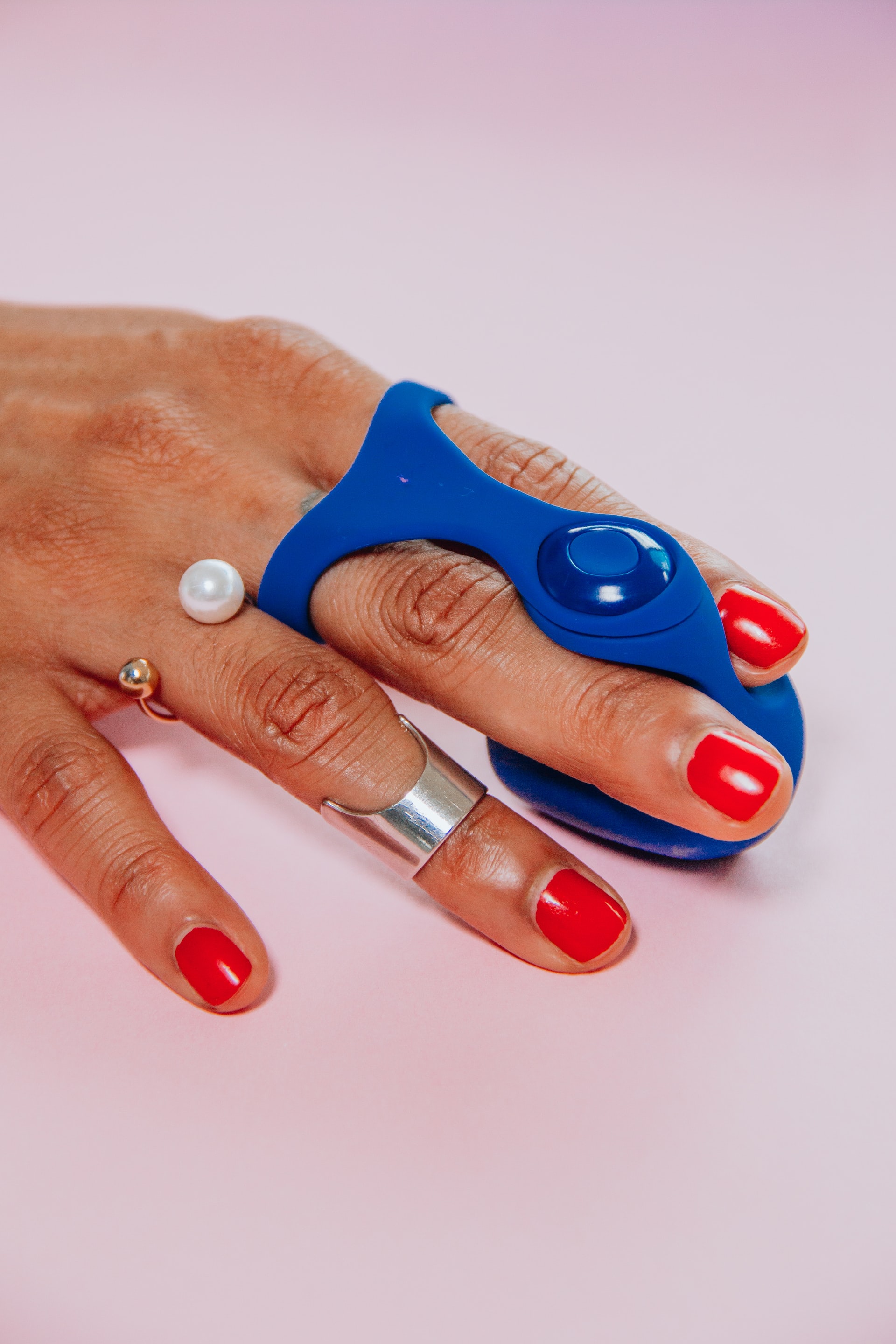Next Significant Development In The Vibrator Timeline - How Vibrator Changed From Medical Tool To A Sex Toy
The use of the vibrator in the sex arena is the next significant development in the vibrator timeline. For a gadget designed for sexual pleasure, the vibrator's development seems rather clinical. The device was therapeutically utilized for decades as a purported medical therapy for the unusual sickness of hysteria. The first vibrators appeared in the middle of the 1800s, so it's not a new technology.
Author:Suleman ShahReviewer:Han JuApr 08, 20230 Shares142 Views

The use of the vibrator in the sex arena is the next significant development in the vibrator timeline.
For a gadget designed for sexual pleasure, the vibrator's development seems rather clinical.
The device was utilized for decades as a purported medical therapyfor the unusual sickness of hysteria.
However, the vibrator's reputation and prevalence in medical practice have significantly changed.
Initially, doctors would use vibrators to help women feel "emotional comfort."
Those early adopters in the past were onto something like vibration use is associated with sexual healthand may have additional healthbenefits.
Since the first vibrator was made, it has undergone many significant changes, the biggest of which is that more and more men are getting used to and interested in them.
Beginning Of Vibrator
Hysteria was treated using vibrators in the late 19th and early 20th centuries.
Psychologists would bring in female patients and rub their vulvae until they went into a state of "hysterical paroxysm," or orgasm.
Insomnia, shortness of breath, dizziness, nausea, vomiting, lack of appetite, and changes in sexual desire was also reported.
In the 19th and 20th centuries, doctors didn't see the therapeutic value of orgasms caused by outside stimulation, even though they are pleasurable and can help relieve stress.
Chronically anxious ladies in 19th-century Britain were advised to have a pelvic finger massage.
Because of how laborious and time-consuming this was for doctors, someone came up with a device to do it for them.
Electric vibrators were originally commercially accessible for household usage in the early 20th century.
When this improvement was accomplished, the vibrator became the sixth typical home appliance to be wired for electricity.
Vibrating devices were promoted as therapeutic aids for the home as early as the 1900s; however, by the 1920s, pornographic depictions of such devices had begun to emerge, and the market for such products developed.
The historical sexism surrounding the vibrator must be acknowledged, but so must the classism and racism of the period, both of which have a bearing on modern conceptions of sexuality.
The clitoral orgasm was recommended for hysterical patients as early as the first century AD.
In the early 1880s, AD Joseph Mortimer Granville invented an electromechanical vibrator to treat sore muscles.
At the turn of the 20th century, ladies who wanted to try needlework at home could buy dummy patients in needlework catalogs.
After Sigmund Freud properly defined paroxysm as sexual in the 1920s, the vibrator's reputation as a medical instrument waned.
Years later, when the vibrator became popular, ladies didn't need to make up an ailment to justify buying one.
Hysteria Is The Cause Of Vibrator Invention
Vibrators were widely used as a treatment for hysteria in the 19th century.
Hysteria, which gets its name from the Greek word for "uterus," was a condition that manifested in sexually frustrated women.
Critics now say it just means one is overly feminine for men's tastes.
But what makes sense as a therapy for hysteria if we put ourselves in the shoes of sexist nineteenth-century doctors.
Patients with hysteria were often brought in for a vulvar massage in the 1800s when their vulvae were stroked until they had an orgasm.
They weren't doing anything sexual since they were stimulating each other externally, and according to Freud, female sexual pleasure can only be experienced via the genital organs.
To treat hysteria, American doctor George Taylor created a steam-powered vibrator he named the "Manipulator" in the 1860s.
Then, in 1880, the closest predecessor to current vibrators was patented by a British doctor named Joseph Mortimer Granville.
Medical literature from the first century AD recommends clitoral orgasm as a cure for hysteria.
Although first advertised as medicinal tools, the use of vibrating massagers in pornographic media has become commonplace.
Their commercial success dwindled in the 1920s.
Vibrators had fallen out of favor until the sexual revolution of the 1960s.
Hysteria was a common diagnosis for women in the late 19th and early 20th centuries.
The previous diagnosis just masked an effort to control women's sexual behavior.
The American Psychiatric Association discontinued its official recognition of hysteria in 1952.
The Manipulator, a steam-powered vibrator designed by George Taylor in the 1860s, was used to treat hysterical sufferers.
The vibrator's popularity skyrocketed after its unintended use on hysterical women.

HYSTERIA - The Story Of The Vibrator
Vibrator Role In Sexual Life
This device is an important part of American sexuality because more and more women are using vibrators and more and more men are interested in sex toys.
It seems like a link between using a vibrator and having better sexual health.
Women who have used a vibrator in the last month, either alone or with a partner, had higher scores on the Female Sexual Function Index (a questionnaire that measures sexual arousal, orgasm, pleasure, and pain) than those who have never used a vibrator or who have only used them for masturbation.
Using a vibrating massager has been related to an improved lifestyle, including more exercise and less couch time, which may boost a user's sexual enjoyment. Source
Men who are feeling well physically are more inclined to take care of their sexual health by doing things like self-examinations of the testicles.
They also have an increased likelihood of success in four of the five domains of the international index of erectile function (erectile function, intercourse satisfaction, orgasmic function, and sexual desire).
During foreplay, partners can choose from various vibrators that work on both simultaneously, or one partner can use a vibrator made just for their gender.
Vibrator Role For Health
In the late 1870s or early 1880s, British surgeon Joseph Mortimer Granville devised the "percuteur," the first electro-mechanical vibrator.
Granville made the percuteur because he thought that vibration, which he thought was the source of all human energy, would stimulate sick nerves.
Even though the medical community widely accepted hysteria as a neurological disorder at the time, Granville turned away female patients simply because he did not wish to be hoodwinked by the vagaries of the hysterical condition.
The vibrator was first designed as a treatment for males alone.
Then, suddenly, it was no longer part of conventional medicine.
In the early 20th century, vibrators were mass-produced and marketed as commonplace electric home equipment.
Electricity was risky and costly, but it promised excitement and modernity, so many people were eager to make the switch.
As the middle class grew, electric appliances like sewing machines and washing machines became a sign of being in the middle class.
Vibrators were another cutting-edge innovation that enticed people to switch to electric appliances.
In the 1940s, the Rural Electrification Administration gave out free vibrators to farmers in the same way that banks gave away free toasters in the 1960s when they opened checking accounts.
There was no stigma attached to these high-tech electronic gadgets.
Vibrators As A Cure For Masturbation
The vibrator was used to treat various medical conditions, including sexual dysfunction.
Even when there was a lot of anti-masturbation feeling, the fact that it could be used this way was not kept secret.
Unique vibrator accessories, like the rectal applicator, were sold with treatments for problems that were said to be caused by "ruinous and common masturbation."
Some people believed that masturbation led to male impotence and hysteria in women.
By the turn of the twentieth century, masturbatory sickness had become mainstream.
One version of this myth that has stuck around is that masturbation can cause blindness.
What people were doing with their vibrators is unknown.
Although their usage is debatable, the evidence implies they were associated with medical therapy rather than immoral masturbation.
Users may have been doing things often linked to masturbation, but they probably didn't know what they were doing.
Vibrators Today
The era of sex toys has never been better than it is now.
In 2019, the worldwide sex toy business was worth an estimated $28.64 billion US and is expected to expand.
The proliferation of sex toys may be attributed to the convenience of online shopping, where customers can remain anonymous.
The combination of technical progress and a deeper understanding of sexual pleasure has led to many new products in this space, from eco-friendly vibrators to high-end versions with a wide range of speeds and movements.
As the sex-positive movement grows, we must start having honest conversations about sexual pleasure and sex toys.
Nowadays, the societal attitude toward women using vibrators in the United States is quite favorable.
According to a nationwide poll, men and women have quite favorable opinions of women who use vibrators.
Vibrators are used frequently in heterosexual, lesbian, and bisexual relationships, with over 52% of women reporting using them.
The acceptance of male vibrators is also increasing.
Commercial male vibrators have been around since the 1970s, and they have been used to treat erectile dysfunctionand aid in rehabilitating men who have had spinal cord injuries.
The Fleshlight, the first vibrator for men that could be bought and was well-liked, came out the same year.
Due to the success of the Fleshlight, manufacturers of sex toys began targeting men.
Many upscale adult toy retailers like Babeland now have male-only areas. In one survey, almost half of males admitted using a vibrator for sexual purposes, either alone or with a partner.
The other found that over half of homosexual and bisexual men use vibrators, making them the third most popular sex object behind dildos and non-vibrating cock rings.
People Also Ask
When Was The Modern Vibrator Invented?
In the late 1870s or early 1880s, British surgeon Joseph Mortimer Granville made the first electromechanical vibrator.
It was called the "percuteur."
Who Invented The Modern Vibrator?
Joseph Mortimer Granville, a physician and British doctor invented the modern electric vibrator.
What Is The Lifespan Of A Vibrator?
A well-maintained, high-quality vibrator should serve you well for many years.
If you're cautious about where you purchase and take care of your toys, you shouldn't have to replace your vibrator more often than once every few years.
How Old Was Your First Vibrator?
You may purchase sex toys at any time, regardless of your age.
There is no need to wear a condom or worry about sexually transmitted diseases if you do not engage in the practice of exchanging sex objects.
Still, the best way to ensure the sex toy is clean and avoid UTIs is to wash it often.
Conclusion
Aside from sexism, classism and racism also played significant roles in developing the vibrator, and it is crucial to realize this.
It's comforting to imagine a smooth trajectory from repressed to free in western sexual mores, but the vibrator's past and current reception are everything from stable.
Vibrators are still promoted as massagers, and masturbation by women is sometimes depicted as embarrassing or demeaning compared to sexual activity with a man.
Men's sex aids like Viagra are publicly advertised in the United States, but women's birth controland sex toys remain subject to strict regulations.

Suleman Shah
Author
Suleman Shah is a researcher and freelance writer. As a researcher, he has worked with MNS University of Agriculture, Multan (Pakistan) and Texas A & M University (USA). He regularly writes science articles and blogs for science news website immersse.com and open access publishers OA Publishing London and Scientific Times. He loves to keep himself updated on scientific developments and convert these developments into everyday language to update the readers about the developments in the scientific era. His primary research focus is Plant sciences, and he contributed to this field by publishing his research in scientific journals and presenting his work at many Conferences.
Shah graduated from the University of Agriculture Faisalabad (Pakistan) and started his professional carrier with Jaffer Agro Services and later with the Agriculture Department of the Government of Pakistan. His research interest compelled and attracted him to proceed with his carrier in Plant sciences research. So, he started his Ph.D. in Soil Science at MNS University of Agriculture Multan (Pakistan). Later, he started working as a visiting scholar with Texas A&M University (USA).
Shah’s experience with big Open Excess publishers like Springers, Frontiers, MDPI, etc., testified to his belief in Open Access as a barrier-removing mechanism between researchers and the readers of their research. Shah believes that Open Access is revolutionizing the publication process and benefitting research in all fields.

Han Ju
Reviewer
Hello! I'm Han Ju, the heart behind World Wide Journals. My life is a unique tapestry woven from the threads of news, spirituality, and science, enriched by melodies from my guitar. Raised amidst tales of the ancient and the arcane, I developed a keen eye for the stories that truly matter. Through my work, I seek to bridge the seen with the unseen, marrying the rigor of science with the depth of spirituality.
Each article at World Wide Journals is a piece of this ongoing quest, blending analysis with personal reflection. Whether exploring quantum frontiers or strumming chords under the stars, my aim is to inspire and provoke thought, inviting you into a world where every discovery is a note in the grand symphony of existence.
Welcome aboard this journey of insight and exploration, where curiosity leads and music guides.
Latest Articles
Popular Articles

